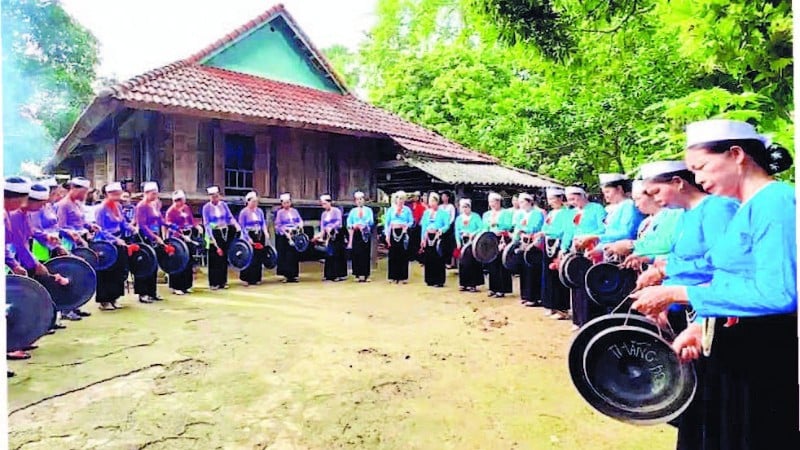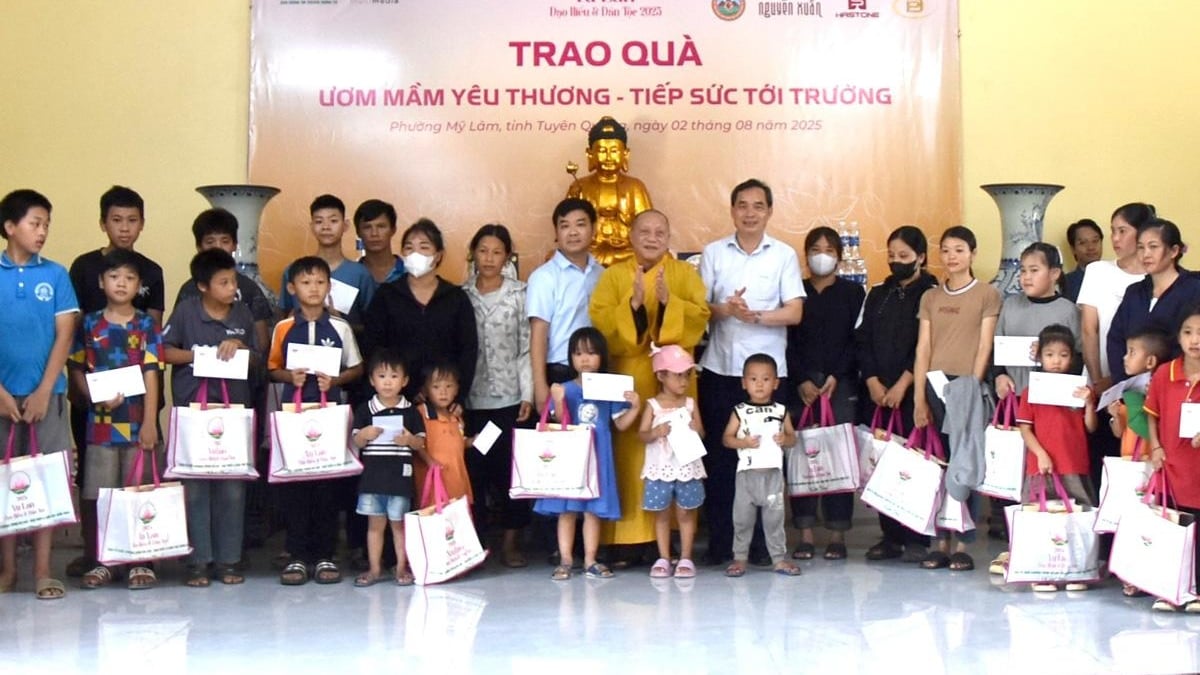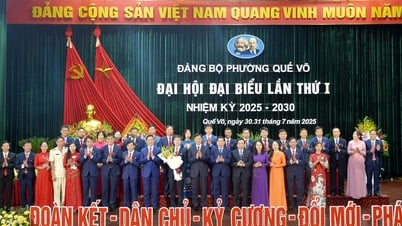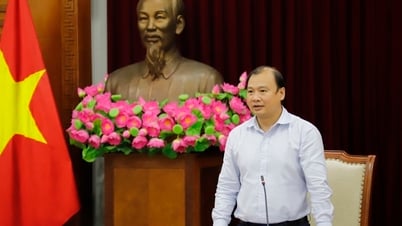Muong gong art is often performed at festivals and is recognized as national intangible culture.
The Muong people of Hoa Binh province (old) not only live with cultural heritages, but also pass them down through many generations as a sacred asset, creating a unique and unmistakable feature. Muong ethnic culture is a precious treasure with a system of cultural heritages that have been recognized at the national level, including: Bamboo calendar folk knowledge, Khai Ha festival of the Muong ethnic group, gong and mo art of Muong...
In the cultural heritage of the Muong people, gongs play a very important role. Gong culture is considered the soul of the Muong people, a sacred object symbolizing the material and spiritual prosperity of each family as well as the Muong community, with its own unique features. In 2016, the art of gongs in Muong Hoa Binh was included in the list of national intangible cultural heritage by the Ministry of Culture, Sports and Tourism.
Implementing the province's policy on preserving Muong gongs, with the attention of all levels, sectors and people, up to now, the number of gongs in the area has increased significantly. Gongs are commonly used in community activities, in many cultural and political activities in the area, participating in a number of regional and national events. Ms. Bui Thi Chinh in Nhan Nghia commune said: Muong gongs in our people's lives are not only musical instruments but also sacred symbols associated with festival beliefs and community life, maintained, practiced and taught to younger generations to promote and preserve.
For the Muong people, singing folk songs and performing traditional musical instruments are one of the most common genres in daily life, festivals, weddings... Quach Minh Chau in Bai Chim hamlet, Quyet Thang commune said that he has been singing Muong folk songs since he was a child, being lulled to sleep by his grandmother and mother, playing or singing at festivals, which has a huge significance in terms of cultural identity, origin, and human morality. In his hometown, clubs were established and taught by uncles and aunts to avoid being lost to future generations. He loves Muong folk songs very much.
Muong folk songs are an indispensable feature in the culture of the Muong people. Notably, in the duets (singing with love) and Thuong Rang, Bo Mang, in addition to the available songs (Thuong Ang songs) that are passed down in folklore, most singers always have to improvise-adventurous-creatively sing lyrics (words), singing immediately and fluently to match the available melody and rhythm to respond on the spot.
Accordingly, artisans must collect, learn and preserve a large volume of Muong language, including ancient Muong language. Currently, many local art clubs are trying to find ancient folk songs and teach them to the younger generation. In particular, the Muong singing movement is currently developing in many localities of Hoa Binh (old), the members of the clubs are all folk artists who are always actively practicing, composing, participating in performances and exchanges at many events inside and outside the province.
In the old Hoa Binh province, there are currently about 300 people working and regularly performing Mo rituals. The Mo plays an important role in the spiritual life and beliefs of the Muong people. To become a shaman, one must be from a family that has passed down the tradition; at the same time, one must be conscientious, honest, and speak clearly and kindly. The shaman is not only fluent in ancient texts, preserving many ancient books, customs, and rituals of the nation, but also has the ability to communicate and pray to supernatural beings to bless people with a prosperous and happy life.
He also guides people on how to behave with supernatural forces in accordance with morality, national cultural traditions and the laws of life. Mo Muong and the epic "De dat-de nuoc" are precious heritages, demonstrating the richness and uniqueness of Muong Hoa Binh culture. With profound human values, currently the Mo Muong cultural heritage is being submitted by Phu Tho province to UNESCO for recognition as an intangible cultural heritage of humanity.
People's Artisan Bui Van Minh, Thuong Coc Commune said: "Mo Muong has an extremely great meaning to the Muong community, associated with the worship rituals of joy and sadness in the house, in the neighborhood, festivals... Mo is not only a prayer, an offering but also a profound cultural treasure about the traditional morality of drinking water and remembering its source... We teach it to the younger generation, establish clubs so that the younger generations can better understand and love this unique cultural form".
Muong ethnic culture is not only a precious heritage of Hoa Binh province (old), but also a common asset of Vietnamese culture. Preserving and promoting Muong culture contributes to preserving national identity.
Source: https://nhandan.vn/gin-giu-kho-tang-di-san-van-hoa-muong-post898081.html





































































































Comment (0)